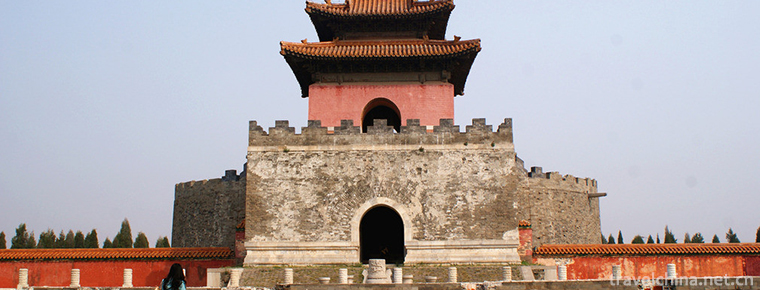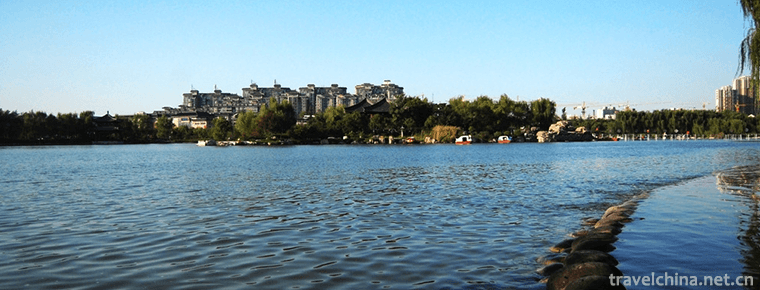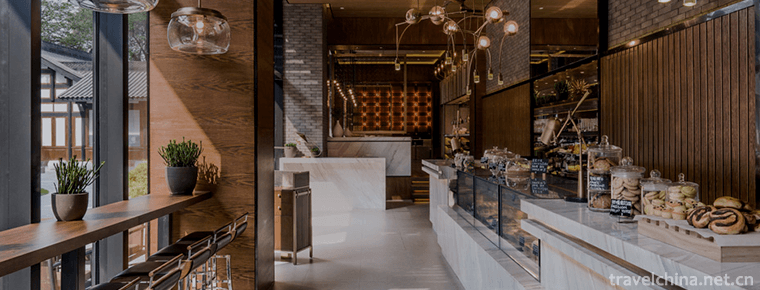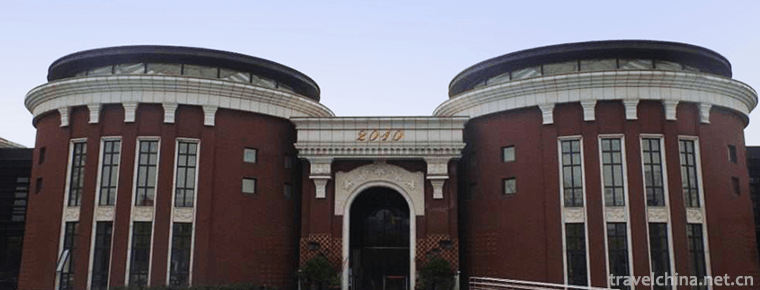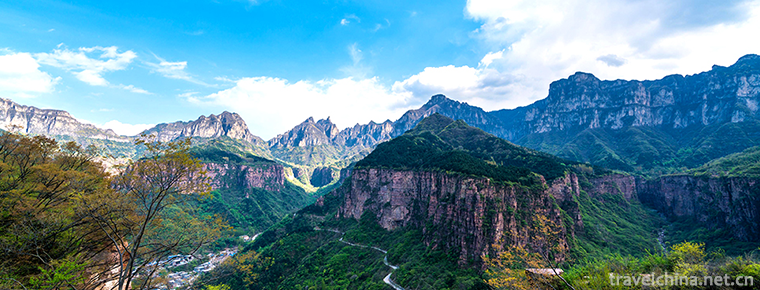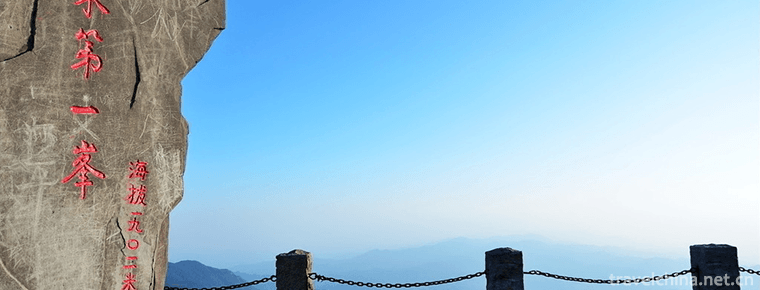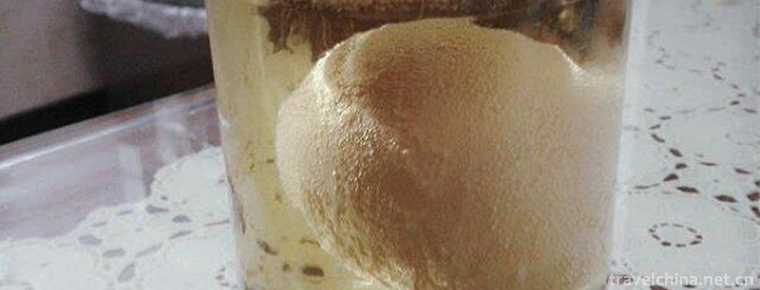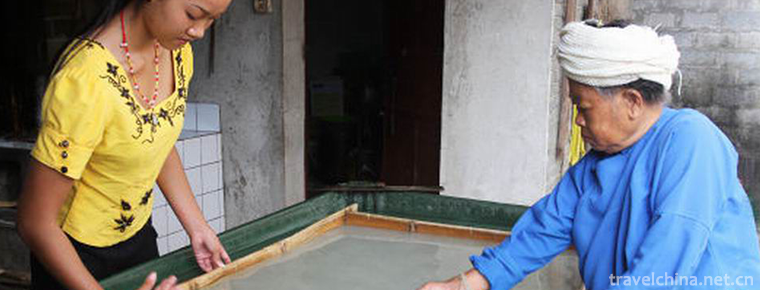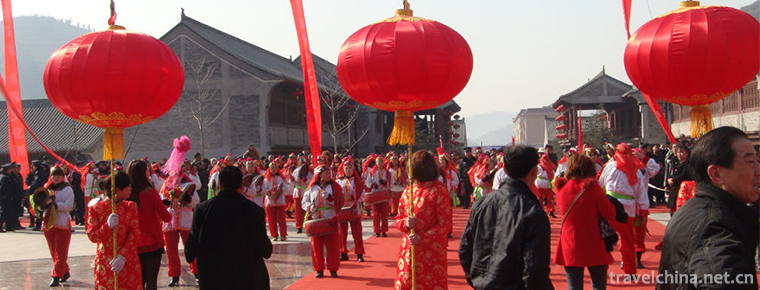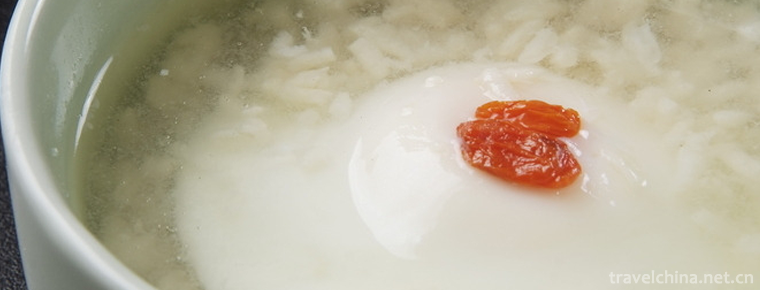Kaiping Diaolou and Villages
Kaiping Diaolou and Villages
In Kaiping city, there are many blockhouses, towns and countryside. There are more than a dozen villages and less than two or three villages. From Shuikou to Lily, and from Tangkou to Chigang and Chishui, tens of kilometers in length and breadth are continuous and magnificent. This blockhouse is the witness of Kaiping's political, economic and cultural development. It not only reflects the history of the overseas Chinese people's hard struggle to protect their country, but also reflects the living museum of modern architecture and a distinctive art corridor.
brief introduction
At about 8:35 a.m. Beijing time on June 28, 2007, at the 31st World Heritage Committee Conference of UNESCO, held in Christchurch, New Zealand, "Kaiping Diaolou and Villages" declared the World Cultural Heritage Project and passed a vote. It was officially listed in the World Heritage List, becoming the 35th World Heritage Site in China and the first World Cultural Heritage Site in Guangdong Province.
In Kaiping city, there are many blockhouses, towns and countryside. There are more than a dozen villages and less than two or three villages. From Shuikou to Lily, and from Tangkou to Chigang and Chishui, tens of kilometers in length and breadth are continuous and magnificent. This blockhouse is the witness of Kaiping's political, economic and cultural development. It not only reflects the history of the overseas Chinese people's hard struggle to protect their country, but also reflects the living museum of modern architecture and a distinctive art corridor. It can be said that as the home of overseas Chinese, architecture and art, Kaiping's characteristics have been clearly reflected in the blockhouse.
Kaiping is located in the southwest of the Pearl River Delta. During its heyday, there were more than 3,000 towers in Kaiping. There are 1833 existing towers. The number of them, the exquisite architecture and the diversity of styles are rare in the local architecture in China and even in the world. The declaration of world cultural heritage in Kaiping Diaolou and villages started in 2000.
Most of the existing towers in Kaiping were built in the early Republic of China. The purpose of building towers is not to let people watch, but to resist thieves and avoid floods. Before the founding of the People's Republic of China, burglars peaked in Kaiping, floods continued, people did not have enough time to live, and many overseas Chinese, returned overseas Chinese and their relatives were killed. It's hard to say that when you see this, you invite someone to design a blueprint for a blockhouse in the country of residence and take it home to build it. Because of the influence of overseas Chinese living in Europe and America, the architectural style and style of the towers are varied.
Rise
The rise of Kaiping Diaolou is closely related to Kaiping's geographical environment and past social security. Kaiping has a low-lying terrain and a dense river network. In the past, water conservancy was out of repair. Every typhoon, rainstorm, floods and waterlogging were often worrying. In addition, the territory under its jurisdiction, formerly the border of Xinhui, Taishan, Enping and Xinxing counties, has always been called "Four Regrets", and social order is relatively chaotic. Therefore, in the early Qing Dynasty, townspeople built towers for waterlogging and banditry prevention. After the Opium War, the rule of the Qing government was even more decadent. The Kaiping people were forced to make a living and began to make a living abroad in large numbers. After the hard struggle of one generation or even generations, some industries gradually emerged. In the Republic of China, wars were still more frequent, and banditry was particularly rampant. Because of the blending of mountains and rivers, convenient land and water transportation, and the relatively well-off life of the relatives of overseas Chinese and returned overseas Chinese, bandits concentrated in the Kaiping area to commit crimes. At that time, the larger bandits in the county were Zhang Shao, Zhu Bing, Hunan, Hou Yan, Tan Qin, Wu Jinfa, Zhang Zhan and Huang Bao. They looted everywhere and created numerous tragedies. According to rough statistics, from 1912 to 1930, there were about 71 major robberies in Kaiping, killing more than 100 people, grabbing over 210 cattle and plundering countless other property. Three times, Cangcheng County was captured, and even Zhu Jianzhang, the county governor, was captured. When the wind blows and the grass moves, people gather up the gold and silver and hide everywhere, often startled overnight and sleepless all night. When overseas Chinese return home, they often do not dare to stay at home, but go to the town or relatives'home, and often change their accommodation places, otherwise there will be a danger of family ruin and death.
In the 14 years from the first year of the Republic of China (1912) to the fifteenth year of the Republic of China (1926), there were eight school robberies and more than 100 teachers and students were captured. In the eleventh year of the Republic of China (1922), when bandits robbed Kaiping Middle School in Chikan District in December, they were illuminated by the searchlight of Yingcun Diaolou, intercepted in time by local groups, and intercepted 17 principals and students. The incident stirred up the whole county, and the news of overseas Chinese was also very surprising. They felt that the blockhouse played a role in preventing banditry. Therefore, they saved money and went home to build the blockhouse. Later, for the sake of the safety of their families and the protection of their property, some overseas Chinese built all kinds of towers when they returned home to build new houses. In this way, blockhouses have become a major feature of Kaiping, an overseas Chinese homeland, with more than 3,000 at most and more than 1,400 at present.
category
There are many kinds of Kaiping Diaolou. There are four kinds of Diaolou in terms of building materials.
Reinforced concrete building
Most of these buildings were built in the 1920s and 1930s. They were designed and constructed by overseas Chinese who absorbed the different characteristics of buildings around the world. The whole building is made of cement, sand, stone and steel bars.
Extremely durable, but because the building materials at that time were imported from abroad, the cost was high, in order to save materials.
There are also interior floors made up of wooden pavilions.
Green Brick Building
Blue brick blockhouse includes three kinds of brick masonry: inner clay and outer green brick, inner cement and outer green brick and green brick masonry.
Inner mud and outer green brick: This kind of building is actually the mud brick building mentioned above. However, it is covered with a layer of green brick on the outside of the mud wall, so that it is not only beautiful, but also can prolong the service life of the building.
Inner cement and outer green brick: The walls of this kind of towers look like green brick buildings. In fact, they are wrapped with inner and outer green brick. A small amount of steel bar and cement is used in the middle, which makes the building more solid, but it saves money than all the reinforced concrete and keeps beautiful features.
Green Brick Building: All of them are made of green brick, which is economical, beautiful and durable, and can adapt to the characteristics of rainy water in the south.
Mud Tower
Including clay brick building and yellow mud rammed building two kinds. Mud brick buildings are made of mud bricks and used as building materials after they are dried. In order to prolong the service life of mud brick, craftsmen often put a layer of sand or cement on the outside of mud brick wall to protect and reinforce mud brick buildings. Yellow mud rammed towers are made of yellow mud, lime, sand and brown sugar mixed proportionally as raw materials, and then rammed into walls with two large wooden boards. Such tamped yellow mud walls are generally more than one foot thick and can be compared with reinforced concrete walls.
Stone Tower
That is to say, using mountain stones or pebbles as building materials, the shape is rough, short, but durable. The number of such towers is very small, mainly distributed in the mountains such as Dasha.
Tourist routes
8:45 a.m. at Tangkou exit of Fokai Expressway
Route
9:00 a.m. Self-reliance Village (60 minutes visit)
Zili Village is rated as "one of the 50 places most worthy of foreigners to visit in China". It is a typical representative of Kaiping Diaolou and village. There are fifteen distinct style and unique shape towers in the village, which are usually named after the founder's name or his will. The building is tall and has distinct foreign architectural features: colonnade, platform, castle, and hybrid. Earlier, the CCTV Oriental Space-time Film Group broadcast live to the village, showing the world the charming features of Kaiping Diaolou. The fifteen towers in Zili Village are beautifully built and well preserved. They are surrounded by lotus ponds, melon fields, vegetable orchards and fruit trees. They are connected by several paths. They walk on stone paved paths and look at the towers that have gone through vicissitudes of life. They seem to have returned to a hundred years ago at once.
At 10:10 a.m. (60 minutes for lunch, 80 minutes for visits), the National AAAA Class Tourist Site was awarded in 2002. It was initially built by Mr. Xie Weili, an overseas Chinese from the United States in the 1920s. It has both the style of Suzhou gardens and the western style of European and American villas. The park is divided into three parts, each separated by artificial river or wall, which is self-contained and connected by bridges and pavilions and corridors. The corridors and pavilions in the park are exquisite and unique. There are gardens and sceneries in the park. The layout is elegant, the layout is delicate and interesting. It can be said that the gardens of overseas Chinese in China are unique. No wonder Dr. Henry, Director-General of UNESCO, visited the park and said, "This is a glorious example of Kaiping traditional culture, which perfectly combines Chinese culture with Western culture."
In the restaurant in the garden, you can enjoy the special rural delicacies of Kaiping, such as Chikan tofu horns, fried beef steamed buns, watermelon and taro pots.
1:30 p.m. Chikan Ancient Town (Continental Style Street, Film and Television City, 45 minutes)
Chikan Ancient Town is a famous historical and cultural town in the whole country. It has ancient street scenery, simple folk customs, unique Western architecture buildings and boats, stone arch bridges, arcades, wooden pavilions and double tiled roofs. It is characterized by Lingnan Fair "Xiaoguang". The Red Tower (Kaiping No.1 Middle School) along the North Bank of the Tanjiang River, the Stuart Popular Library and the Guan Nationality Library along the West Bank of the dyke, these red walls and green tiles, courtyard bell tower, beautiful flowers and bamboos, and public cultural settings with European and American style, have become a scene of Chikan overseas Chinese culture, playing a great role in advocating culture, developing science and technology, truly witnessing the historical changes of the great era and experiencing in Chikan. Jinghui Tower of Town Style Showroom: The Largest Arcade Building in Chikan Town; Furniture Decoration of the Republic of China Style, Old Style Fragrance, Reflections on Old Style; Stocks in the 1920s, China's First Cashier, Business Cards of Prostitutes... More than 500 historical objects touch the prosperity of Chikan's past from the rich historical objects.
Chikan Film and Television City: Chikan was the main shooting base of Hong Kong film "Drunken Boxing II" and CCTV "Hong Kong Story", and the first stop of Phoenix Satellite TV "Seeking Far Home". Chikan Sanjiaxiang Film and Television City covers an area of 6,000 square meters. The whole scene is designed and constructed according to the architectural style of Xiguan Overseas Chinese Affairs in Guangzhou in the 1920s. The film and television city not only expresses the Chinese traditional architectural carving art vividly, but also integrates the western famous relief art. Its whole scenery is also skillfully integrated with the famous European style street in Chikan ancient town.
2:45 p.m. Ma Jianglong Blockhouse Group (60 minutes visit)
Ma Jianglong Village was named "the most beautiful village in Guangdong". It is backed by Baizu Mountain, facing the Tanjiang River. The villages are scattered among the green mountains and waters. The ecological environment is very beautiful. There are 13 towers and luxuries in the dense bamboo bushes behind the village, which are integrated with the surrounding residential buildings and natural environment. Traveling through bamboo forests, green bamboo trees are like shade, birds are singing and flowers are fragrant. There are hundreds of Carambola trees planted in the "paradise" between them. Although there have been nearly a hundred years, they are still flourishing, vigorous and prosperous.
4:30 p.m. Chishui Xiangjiang Hot Spring
Xiangjiang Hot Spring is located in Chishui Town, Kaiping City, surrounded by mountains, verdant trees, fresh air. There are more than 60 multi-functional pools in the resort area. Hot spring water is a rare metasilicic acid type hot mineral spring, which contains a variety of trace elements necessary for human body by the geological and mineral departments. Whether it is hot summer or cold season, it can bring people joy and freedom of mind. Xiangjiang Hot Spring makes every guest feel meticulous human care and real enjoyment. It is a resort for tourism, vacation, business negotiation, leisure and entertainment.
Tourist traffic
Kaiping City has convenient land and water transportation. Kaiyang Expressway and National Highway 325 run across the whole area. It takes about 1 hour and 20 minutes from Guangzhou by bus or self-driving to Kaiping. The first-class national port, Sanbu Port, has two luxury passenger ships to and from Hong Kong every day. They can reach their destination in four hours and leave Kaiping to Hong Kong at 13:30 every day. Guangdong Province Bus Station (next to Guangzhou Railway Station) to Kaiping Bus, first shift: 6:30 a.m., last shift: 7:30 p.m., every 35 minutes; Guangzhou Zhongshan No. 8 Bus Station to Kaiping Bus, first shift: 6:30 a.m., last shift: 8:30 p.m., every 35 minutes.
Kaiping City Traffic
(1) There are buses in the main streets of the city, 1-7 stops are 1.5 yuan, 8 stops are more than 2 yuan.
(2) There are four taxi companies in the city, namely Volkswagen Taxi Company Limited, Jean'an Taxi Company Limited, Sanbugang Taxi Company Limited and Kaiping 206 Taxi Company Limited. There are more than 200 taxis. Taxis start at 6 yuan (2 kilometers) and exceed 2 kilometers at 500 meters plus 1.2 yuan. When calling a taxi, we should pay attention to whether it is forbidden to get on and off passengers in this section. It is easier to call a taxi at the entrance of the main street or hotel or hotel. In addition, we can call a taxi by calling a service hotline.
(3) There are frequent buses passing through the famous towers and residential attractions, and the Yici to Magang buses passing through the gardens and self-reliance villages; the Yici to Jinji buses passing through the Majianglong villages.








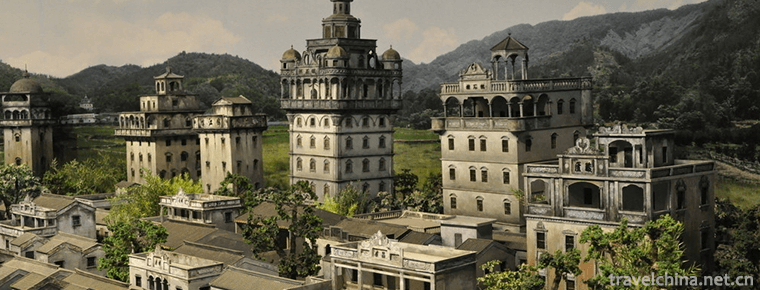
-
Eastern Royal Tombs of the Qing Dynasty
Eastern Royal Tombs of the Qing Dynasty is located 30 kilometers northwest of Zunhua City, Tangshan City, Hebei Province. It is 125 kilometers west of Beijing City and covers an area of 80 square kil.
Views: 268 Time 2018-11-24 -
South Lake
Nanhu, formerly known as Luweichi Lake, also known as Machang Lake and Luanhu Lake , is located in Nanhu District, Jiaxing City, Zhejiang Province.
Views: 238 Time 2018-12-07 -
The Temple House Bo she Hotel
Located in Chengdu, the Bosch is a luxury hotel with a unique style, which combines the beauty of traditional and modern design. The shape design is charming and energetic, reflecting the city's legen.
Views: 268 Time 2018-12-16 -
Shanghai Baoshan International Folk Art Exhibition Hall
Shanghai Baoshan International Folk Art Exhibition Hall is the first exhibition, research and protection of intangible cultural heritage in Shanghai constructed by Shanghai University in cooperation w.
Views: 154 Time 2018-12-19 -
Baligou Scenic Area
Baligou Scenic Area is located in the deep mountain area of Shangbali Town, Huixian County, Xinxiang City, Henan Province, 50 kilometers northwest of Xinxiang City, the southern foot of Taihang Mounta.
Views: 196 Time 2018-12-24 -
Guangdong First Peak Tourist Scenic Spot
Guangdong First Peak Tourist Scenic Area is the largest oasis on the Tropic of Cancer. It has a large area of primitive forests, stable forest ecosystem, dense evergreen broad-leaved forests.
Views: 126 Time 2019-01-13 -
White vinegar egg
Cuisine and efficacy: Heart-regulating diet, insomnia diet, palpitation diet, brain-tonifying diet.
Views: 349 Time 2019-03-24 -
Handmade Paper Making Skills of Dai and Naxi Nationalities
Dai and Naxi hand-made paper-making skills, Yunnan Lincang City, Shangri-la County, local traditional handicraft, one of the national intangible cultural heritage..
Views: 127 Time 2019-04-24 -
Neutralization Festival
Zhonghe Festival, a traditional Chinese folk festival, is on the second day of February, but the date at that time was on the first day of February. With the evolution of history, it was changed to th.
Views: 379 Time 2019-08-03 -
Han Feizi
Han Feizi is a collection of works of famous thinkers and Legalists Han Fei during the Warring States period. Han Feizi was compiled by posterity after Han Fei's death. According to hanshuyiwenzhi &qu.
Views: 92 Time 2019-09-07 -
Sugar Eggs
Laozao is a local snack, belonging to Sichuan cuisine. Laolao, a kind of wine brewing in ancient Chinese, is a Sichuan dialect, that is, boiled eggs with wine brewing. Put the mash in the pot and boil.
Views: 468 Time 2020-03-09 -
Transportation in Mianyang
By the end of 2018, Mianyang had 20146 km of highways, 412 km of expressways, 268 km of Railways and 57 civil aviation routes..
Views: 153 Time 2020-12-14
